Advertisement

How Cruise Control Systems Work
- Share Content on Facebook
- Share Content on LinkedIn
- Share Content on Flipboard
- Share Content on Reddit
- Share Content via Email
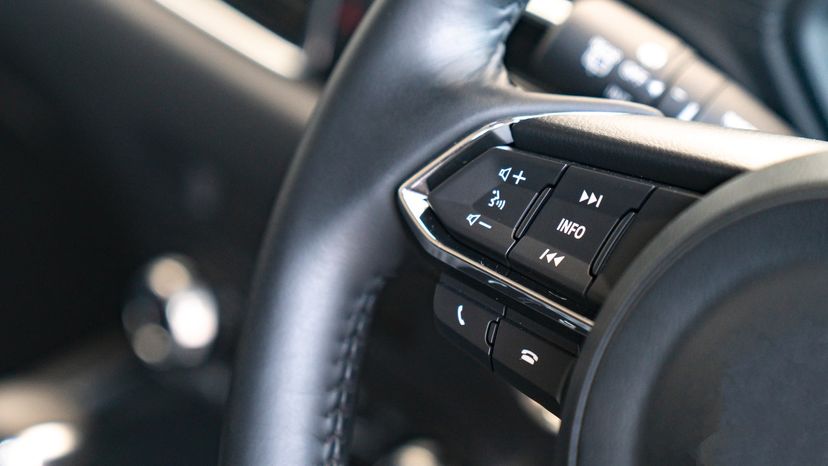
Cruise control is an invaluable feature on American cars. Without cruise control, long road trips would be more tiring, for the driver at least, and those of us suffering from lead-foot syndrome would probably get a lot more speeding tickets.
Cruise control is far more common on American cars than European cars, because the roads in America are generally bigger and straighter, and destinations are farther apart. With traffic continually increasing, basic cruise control is becoming less useful, but instead of becoming obsolete, cruise control systems are adapting to this new reality -- soon, cars will be equipped with adaptive cruise control, which will allow your car to follow the car in front of it while continually adjusting speed to maintain a safe distance.
In this article, we'll learn how a conventional cruise control system works, and then we'll take a look at adaptive cruise control systems that are under development.
What Cruise Control Does
Cruise control acceleration and deceleration, controlling the cruise control, adaptive cruise control.
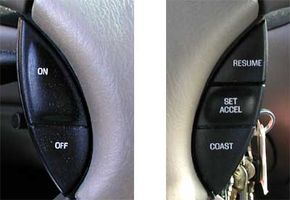
The cruise control system actually has a lot of functions other than controlling the speed of your car. For instance, the cruise control pictured below can accelerate or decelerate the car by 1 mph with the tap of a button. Hit the button five times to go 5 mph faster. There are also several important safety features -- the cruise control will disengage as soon as you hit the brake pedal, and it won't engage at speeds less than 25 mph (40 kph).
The system pictured below has five buttons: On, Off, Set/Accel, Resume and Coast. It also has a sixth control -- the brake pedal, and if your car has a manual transmission the clutch pedal is also hooked up to the cruise control.
- The on and off buttons don't actually do much. Hitting the on button does not do anything except tell the car that you might be hitting another button soon. The off button turns the cruise control off even if it is engaged. Some cruise controls don't have these buttons; instead, they turn off when the driver hits the brakes, and turn on when the driver hits the set button.
- The set/accel button tells the car to maintain the speed you are currently driving. If you hit the set button at 45 mph, the car will maintain your speed at 45 mph. Holding down the set/accel button will make the car accelerate; and on this car, tapping it once will make the car go 1 mph faster.
- If you recently disengaged the cruise control by hitting the brake pedal, hitting the resume button will command the car to accelerate back to the most recent speed setting.
- Holding down the coast button will cause the car to decelerate, just as if you took your foot completely off the gas. On this car, tapping the coast button once will cause the car to slow down by 1 mph.
- The brake pedal and clutch pedal each have a switch that disengages the cruise control as soon as the pedal is pressed, so you can shut off the cruise control with a light tap on the brake or clutch.
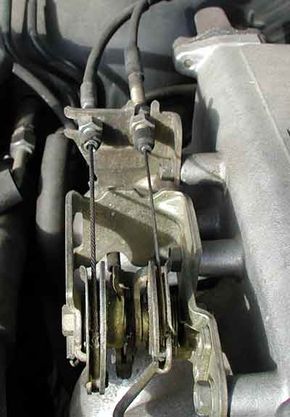
The cruise control system controls the speed of your car the same way you do -- by adjusting the throttle position . But cruise control actuates the throttle valve by a cable connected to an actuator , instead of by pressing a pedal. The throttle valve controls the power and speed of the engine by limiting how much air the engine takes in (see How Fuel Injection Systems Work for more details).
In the picture above, you can see two cables connected to a pivot that moves the throttle valve. One cable comes from the accelerator pedal, and one from the actuator. When the cruise control is engaged, the actuator moves the cable connected to the pivot, which adjusts the throttle; but it also pulls on the cable that is connected to the gas pedal -- this is why your pedal moves up and down when the cruise control is engaged.
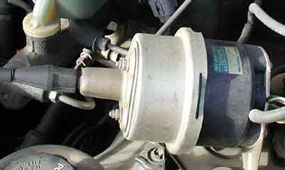
Many cars use actuators powered by engine vacuum to open and close the throttle. These systems use a small, electronically-controlled valve to regulate the vacuum in a diaphragm. This works in a similar way to the brake booster , which provides power to your brake system.
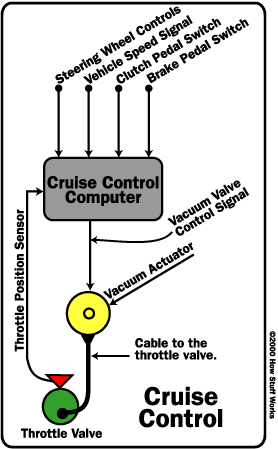
The brain of a cruise control system is a small computer that is normally found under the hood or behind the dashboard. It connects to the throttle control seen in the previous section, as well as several sensors. The diagram below shows the inputs and outputs of a typical cruise control system.
A good cruise control system accelerates aggressively to the desired speed without overshooting, and then maintains that speed with little deviation no matter how much weight is in the car, or how steep the hill you drive up. Controlling the speed of a car is a classic application of control system theory . The cruise control system controls the speed of the car by adjusting the throttle position, so it needs sensors to tell it the speed and throttle position. It also needs to monitor the controls so it can tell what the desired speed is and when to disengage.
The most important input is the speed signal; the cruise control system does a lot with this signal. First, let's start with one of the most basic control systems you could have -- a proportional control .
In a proportional control system, the cruise control adjusts the throttle proportional to the error, the error being the difference between the desired speed and the actual speed. So, if the cruise control is set at 60 mph and the car is going 50 mph, the throttle position will be open quite far. When the car is going 55 mph, the throttle position opening will be only half of what it was before. The result is that the closer the car gets to the desired speed, the slower it accelerates. Also, if you were on a steep enough hill, the car might not accelerate at all.
Most cruise control systems use a control scheme called proportional-integral-derivative control (a.k.a. PID control). Don't worry, you don't need to know any calculus to make it through this explanation -- just remember that:
- The integral of speed is distance.
- The derivative of speed is acceleration.
A PID control system uses these three factors -- proportional, integral and derivative, calculating each individually and adding them to get the throttle position.
We've already discussed the proportional factor. The integral factor is based on the time integral of the vehicle speed error . Translation: the difference between the distance your car actually traveled and the distance it would have traveled if it were going at the desired speed, calculated over a set period of time. This factor helps the car deal with hills, and also helps it settle into the correct speed and stay there. Let's say your car starts to go up a hill and slows down. The proportional control increases the throttle a little, but you may still slow down. After a little while, the integral control will start to increase the throttle, opening it more and more, because the longer the car maintains a speed slower than the desired speed, the larger the distance error gets.
Now let's add in the final factor, the derivative . Remember that the derivative of speed is acceleration. This factor helps the cruise control respond quickly to changes, such as hills. If the car starts to slow down, the cruise control can see this acceleration (slowing down and speeding up are both acceleration) before the speed can actually change much, and respond by increasing the throttle position.
Two companies are developing a more advanced cruise control that can automatically adjust a car's speed to maintain a safe following distance. This new technology, called adaptive cruise control , uses forward-looking radar , installed behind the grill of a vehicle, to detect the speed and distance of the vehicle ahead of it.
Adaptive cruise control is similar to conventional cruise control in that it maintains the vehicle's pre-set speed. However, unlike conventional cruise control, this new system can automatically adjust speed in order to maintain a proper distance between vehicles in the same lane. This is achieved through a radar headway sensor , digital signal processor and longitudinal controller . If the lead vehicle slows down, or if another object is detected, the system sends a signal to the engine or braking system to decelerate. Then, when the road is clear, the system will re-accelerate the vehicle back to the set speed.
The 77-GHz Autocruise radar system made by TRW has a forward-looking range of up to 492 feet (150 meters), and operates at vehicle speeds ranging from 18.6 miles per hour (30 kph) to 111 mph (180 kph). Delphi's 76-GHz system can also detect objects as far away as 492 feet, and operates at speeds as low as 20 mph (32 kph).
Adaptive cruise control is just a preview of the technology being developed by both companies. These systems are being enhanced to include collision warning capabilities that will warn drivers through visual and/or audio signals that a collision is imminent and that braking or evasive steering is needed.
For more information on cruise control, check out the links below.
Cruise Control FAQ
How does cruise control work, how does adaptive cruise control work, will adaptive cruise control stop the vehicle, when would you use cruise control, how useful is cruise control, lots more information, related articles.
- How Car Engines Work
- How Brakes Work
- How Manual Transmissions Work
- How Fuel Injection Systems Work
- How Radar Detectors Work
- Ignition System Quiz
More Great Links
- BMW: Cruise-control-equipped motorcycle
- Cruise Control Block Diagram
- Cruise Control Installers' Instructions
- Cruise Control Service Tips
Please copy/paste the following text to properly cite this HowStuffWorks.com article:

What is Cruise Control and How Does it Function in a Car?

A Quick Overview
Driving on long stretches of highway can be tiring, especially when trying to maintain a constant speed. Cruise control alleviates this by allowing drivers to set and maintain a desired speed without continuous use of the accelerator pedal. Understanding how cruise control functions can help drivers make the most of this convenient feature.
What is Cruise Control?
Cruise control is an automotive feature that enables drivers to set a desired speed for their vehicle. Once activated, the cruise control system maintains the set speed without the need for constant pedal input. It helps drivers maintain a steady pace on long trips, providing convenience and reducing the likelihood of unintentional speed fluctuations.
How Does Cruise Control Function?
Cruise control systems may vary slightly among different vehicle models, but they generally function using the following components and controls:
1. Set Button
To activate cruise control, the driver typically presses a “Set” button or engages a switch on the steering wheel or dashboard. This action captures the current speed of the vehicle and sets it as the target speed for the cruise control system to maintain.
2. Speed Control
Once the cruise control system is activated, the driver can adjust the speed using speed control buttons. These buttons allow the driver to increase or decrease the set speed in small increments. By pressing the appropriate button, the driver can fine-tune the desired speed for their comfort and road conditions.
3. Resume Button
The “Resume” button, also known as the “Accel” button, allows the driver to restore the previously set speed after it has been canceled or temporarily interrupted. When the driver presses the “Resume” button, the cruise control system accelerates the vehicle to the previously set speed.
4. Cancel Button
The “Cancel” button, often marked with the symbol “CRUISE” or “OFF,” deactivates the cruise control system. Pressing this button disengages the system and allows the driver to regain full control over acceleration and braking. It is important to note that the brake pedal can also automatically deactivate cruise control when pressed.
Advantages of Cruise Control
Cruise control offers several advantages to drivers:
- Reduced Driver Fatigue: Cruise control allows drivers to maintain a steady speed without continuously pressing the accelerator pedal, reducing fatigue on long drives.
- Improved Fuel Efficiency: By maintaining a consistent speed, cruise control can help optimize fuel efficiency by reducing unnecessary acceleration and deceleration.
- Avoiding Speeding: Cruise control helps drivers adhere to speed limits by maintaining a set speed, preventing unintentional speeding due to variations in foot pressure on the accelerator pedal.
Limitations of Cruise Control
While cruise control provides convenience, there are limitations to consider:
- Traffic and Safety: Cruise control should be used only in appropriate situations. It is important to remain vigilant and be ready to take control of the vehicle when necessary, such as in heavy traffic or hazardous road conditions.
- Hilly Terrain: Cruise control may struggle to maintain a constant speed on hilly terrain, as it cannot anticipate changes in elevation. In such situations, the driver may need to manually intervene and adjust the speed accordingly.
👉 You may also like - A Deep Dive into the Adaptive Cruise Control System. What Is It?
What is cruise control?
Cruise control is a technology in cars that allows drivers to maintain a constant speed without keeping their foot on the accelerator. The feature is commonly used during long drives on highways or other open roads.
How does cruise control work?
When cruise control is activated, the driver sets a desired speed for the car to maintain. The car’s engine and transmission work together to maintain that speed without any input from the driver.
Is it safe to use cruise control while driving?
Yes, cruise control is generally safe to use while driving. However, drivers should remain attentive and ready to take control of the car at any moment. It’s also important to note that cruise control should not be used in hazardous weather or road conditions.
What are the benefits of using cruise control?
Using cruise control can improve fuel efficiency by helping drivers maintain a consistent speed and reduce unnecessary acceleration. It can also reduce driver fatigue during long drives by allowing them to rest their feet.
Can all cars have cruise control installed?
Not all cars come with cruise control as a standard feature, but many newer cars do have this option available. Additionally, aftermarket cruise control systems can be installed on most cars.
Can cruise control be dangerous?
Cruise control can become dangerous if the driver becomes too reliant on it and fails to remain attentive. Additionally, using cruise control in hazardous conditions, such as heavy traffic or inclement weather, can be dangerous.
Does cruise control work on manual transmission cars?
Cruise control can be installed on manual transmission cars, but it requires a more advanced system than the one used for automatic transmissions. Manual transmission cruise control systems are typically more expensive and less common.
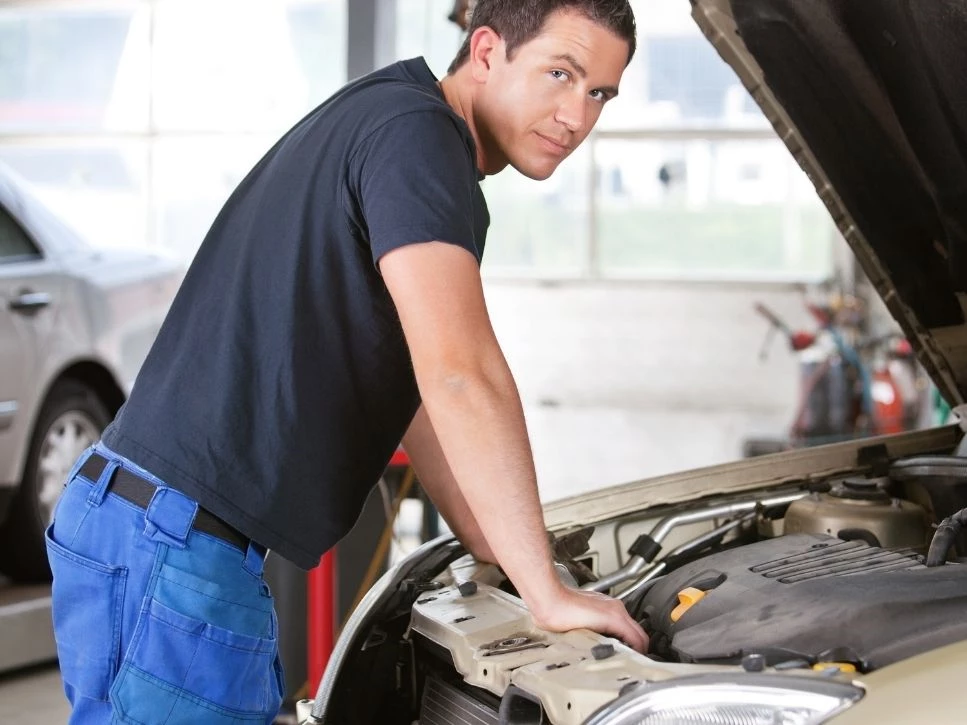
Is Bypassing the Crank Position Sensor Possible? Here's How
A guide to wiring 1, 2, 3, 4 wire oxygen sensors. detailed diagrams.
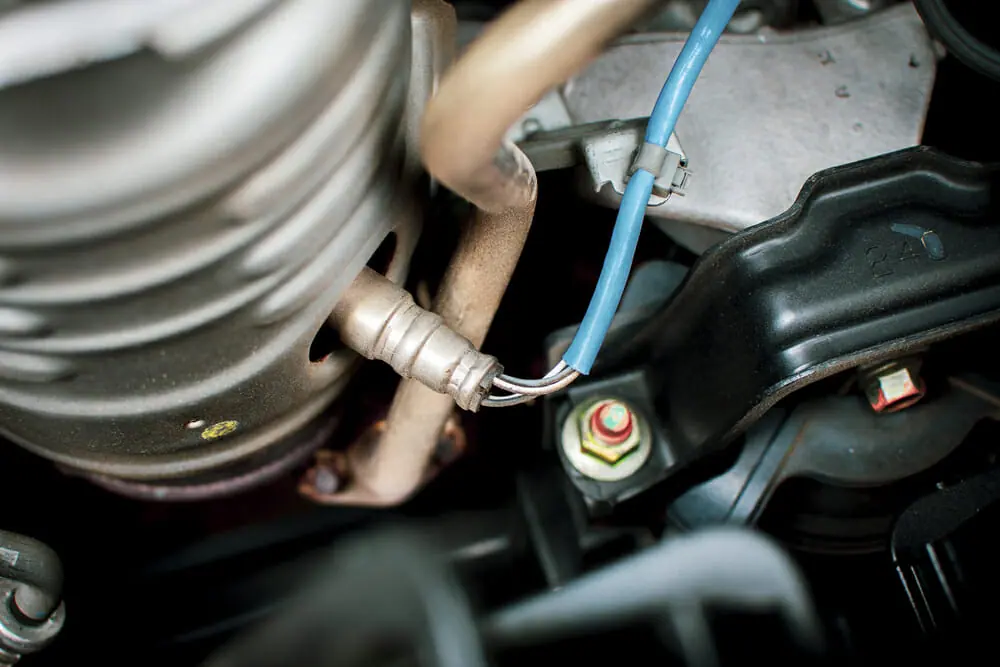
Mastering ASE Testing - The Ultimate Guide for Success

Keeping Current - Charging System Diagnosis and Repair
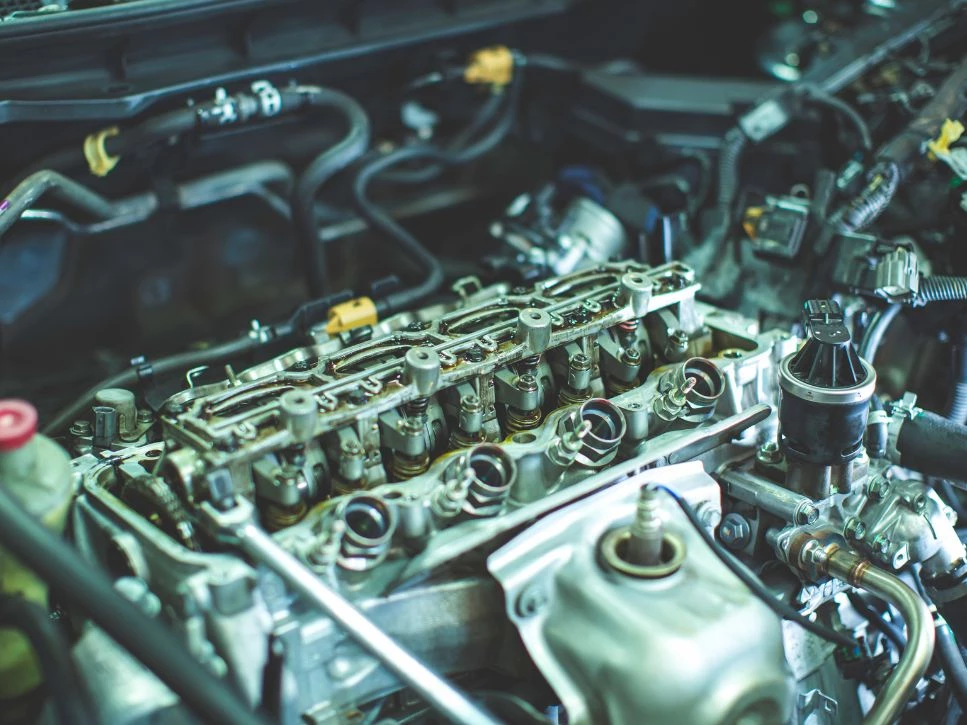
The complete ASE practice test with answers and explanations
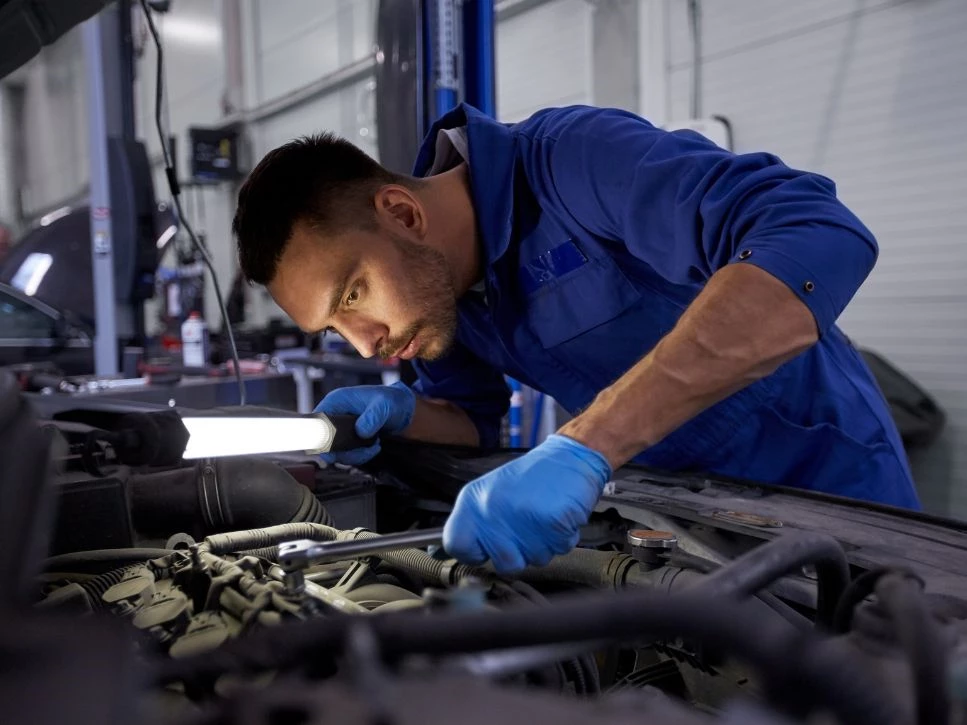
Enhancing the Ride - Accessories Diagnosis and Repair
- Car News & Advice
- Car Ownership
What is cruise control? - Cars Explained
Cruise control was a feature reserved for luxury cars but is now present in many modern cars, even in more budget options. What exactly is cruise control, though?
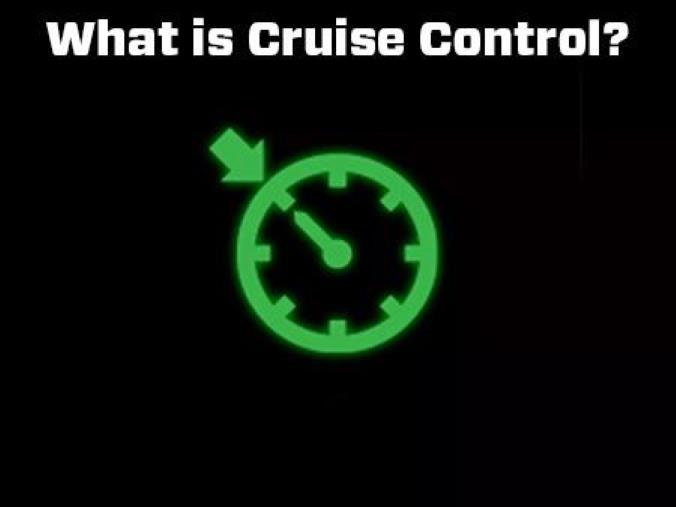
Cruise control, it's a feature that you would only find in luxury vehicles long ago, and the history stretches back to the early 1900s. The primary function of cruise control is merely controlling speed automatically by using a servomechanism to take over the car's throttle to keep a steady speed. The exact speed is set by the driver, and you can take your foot off your car's accelerator once engaged. Over time, cruise control has evolved thanks to the advancement of car technology.
Related: Which car battery charger is the best?
Cruise control is an invaluable feature for highway and open-road driving. It can even help with your fuel economy, resulting in fewer speeding tickets thanks to speed regulation, and you can focus more on the road.
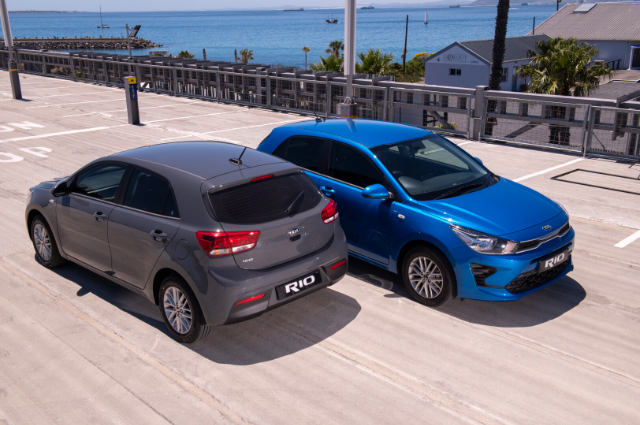
The History of Cruise Control
Cruise control appeared in vehicles like the Wilson-Pilcher, an English car company, back in the early 1900s. As expected, the system was rudimentary, using a lever on the steering column to set your desired speed. American car company Peerless improved on this system by using a governor to maintain speed in uphill and downhill scenarios. Fast forward to the mid-1900s, and modern cruise control began to to show itself with much credit to Ralph Teetor. The inspiration behind modern cruise control for Ralph was due to him being irritated with his driver's habit of erratically speeding up and slowing down while he was talking, which resulted in a jerky drive. Ralph was a mechanical engineer, and since he was already experienced with mechanisms, thanks to being a big player in the automatic transmission, he looked for a solution to fix his driver's jerky driving.

After much work over several years, Ralph secured a patent for a "Speed control device for resisting operation of the accelerator" in 1950. It went under a few names, with the most popular being 'Controlmatic' and 'Speedostat', to name a few. The Chrysler Imperial was the first car to use Ralph Teetor's cruise control invention under the name 'Auto-pilot', but then the name 'Cruise Control' was soon adopted. Since then, it has been a mainstay in automotive technology and features. Today, we see the evolution of this in the form of adaptive cruise control, which makes use of radars, cameras, and numerous pieces of computer technology.

Cruise Control Operation
To explain it simply, modern cruise control systems dictate that the driver must bring the vehicle up to the desired speed, use a button to activate and set the cruise control to the current speed. Basically, a cruise control system works by the system taking a speed signal from a drive mechanism, be it a wheel speed sensor from the engine's revs, speedometer cable or even a rotating driveshaft. Some speed signals can even be obtained from internal electronic speed pulses. Once the signal is obtained, you can set a steady speed. The next advancement in modern-day systems, at least, uses electronic systems like 'drive by wire' throttle to maintain the vehicle's speed. In the 1980s, at least, cruise control systems would maintain the desired speed by pulling the throttle cable using a solenoid or a vacuum-driven servomechanism. In some cars, when the cruise control system was active, you could physically see the accelerator pedal adjust to maintain speed. Nowadays, cruise control systems are usually integrated into the car's computer.

At some point, you'd need to turn off your cruise control, so naturally, all systems are capable of being turned off when the driver presses the brake or, even in the case of a manual transmission car, press the clutch. That or you can deactivate the system via the controls in the cabin. Also, many systems include a memory feature where if you press the brake and the system disengages, you can press the 'Resume' button on the cruise control system controls to return to the previously set speed. While the system is active, you can still accelerate your car, but when you let off the pedal, the vehicle will slow down to the set speed.

The basic controls are as follows:
- Upon pressing the ' Cruise Control Icon ' button, the system will now turn on.
- ' Set ' - In some cars, this can simultaneously turn on the system and set your desired speed to be maintained.
- ' Cancel ' - This cancels the set speed but doesn't turn off the system. Pressing the brake pedal has the same effect.
- ' Res ' - Short for resume, this reactivates the system and returns to the previously set speed.
- ' +- ' - Used to adjust your cruise control speed in increments.

Modern-day Cruise Control
Today, the latest advancements in cruise control include radar, laser and camera-based solutions introducing 'Adaptive Cruise Control' as part of advanced driver assistance systems. This new advancement uses the solutions mentioned earlier to sense other vehicles to determine and adjust speed, adjust following distance and work in conjunction with collision avoidance systems to maintain lanes and avoid a collision. Adaptive cruise control can even brake automatically if there's a vehicle in front that is slowing down and maintains a suitable following distance. You can even adjust your following distance. This nifty system can even come equipped with Traffic jam assist, which can help in bumper-to-bumper traffic. Your vehicle can come to a stop if traffic decides to halt. However, you may need to use your accelerator to get your car moving again and reactivate the system. Thanks to the integration of cruise control into car computers and drive-by-wire throttles, cruise control, mostly in rudimentary form, is a lot more ubiquitous in new cars today, like in many more budget cars. The system certainly makes life easier and open-road driving more comfortable.

When should Cruise Control be used?
Cruise control is best used on open roads or in free-flowing traffic situations. With basic cruise control, you'll find yourself pausing and sometimes turning off the system as traffic conditions change, whereas with Adaptive cruise control will, as its name states, adapt to the changing traffic conditions. It's ill-advised to use cruise control in situations like bad weather such as rain, for example, where you need to control your speed frequently to drive safely as loss of traction can happen, which results in loss of control. Winding roads, urban roads and heavy traffic as well aren't suited for cruise control usage. Using the system while towing isn't advised either due to the additional weight from towing a load that can increase braking distances.
Let us know if you'd like us to cover other car components and features.

Related Articles

Sign up to our weekly Newsletter
- Work For AutoTrader
- Frequently Asked Questions
- Industry Reports
- Products & Offers
- Used & New Cars
- Trucks, Tractors, Vans & More
- Boats & Caravans
- Car Finance Calculator
- Car Finance
- Car Insurance
- K53 Help Guides
- Sell my Car
- Safety & Security
- Terms & Conditions
- Privacy Policy
- Cookie Policy
- PAIA Manual
- Code of Advertising Practice
- What's My Car Worth?
- Buyer's Guide
How to Use Cruise Control Safely
Everything you need to know for safe, stress-free driving with your car's cruise-control system.

Its Job Is to Maintain Speed
Cruise control's primary function is to maintain the speed of your choosing, relieving you of needing to keep your foot on the throttle. Virtually all cars on the road today rely on an electronic control module—a computer—to monitor the vehicle's speed and to readjust it as needed to hold the speed you've chosen regardless of the road's gradient.

Know the Controls
You operate cruise control by either a stalk on the steering column or several buttons on the steering wheel. These include an on-off switch; a "set" button to select the speed you want the car to maintain; and buttons or switches marked "+" and "—" that increase or decrease the speed after it has been set, often in 1-mph increments. A "cancel" button disengages the cruise-control system without shutting it off entirely, allowing the car to coast. (Cars with stalk-operated cruise control have a "cancel" position that you move the stalk to in order to disengage the system.) A "resume" function or button brings the car back to its previously set speed. Braking or depressing the clutch at any time will also cancel cruise control. Should you need to make a quick pass, you can always override the preset speed by simply pressing down further on the gas pedal.
Adaptive Cruise's Added Features
Many newer cars offer what's known as adaptive cruise control, sometimes also called active cruise. It works in the same way as conventional cruise systems and additionally relies on front-mounted radar , cameras, or sensors to detect the presence of vehicles directly ahead in your lane. This enables adaptive cruise-control systems to maintain a set distance from the vehicle in front no matter how it varies its speed.
Adaptive systems allow you to adjust how closely your vehicle follows the one ahead but are programmed so that they always maintain at least a safe minimum following distance. Some of these systems also have the ability to brake and even come to a complete stop in city traffic and, depending on the vehicle, automatically accelerate without the driver pressing the gas pedal when traffic starts to move again.
Semi-Autonomous Cruise Control
Finally, the newest, most advanced cruise control systems, such as such as Nissan ProPilot Assist, Subaru EyeSight, and Audi Traffic Jam Assist, are semi-automated driving assistants that combine adaptive cruise control with lane-keeping assist, which self-steers the car gently to keep it in lane if you let it wander out—although you can only take your hands off the wheel for a few seconds before the system sounds alarms and then shuts off.
.css-1rvrtxn{font-family:Gliko,Gliko-fallback,Gliko-roboto,Gliko-local,Georgia,Times,Serif;font-size:1.625rem;line-height:1.2;margin:0rem;-webkit-text-decoration:underline;text-decoration:underline;text-decoration-color:#DBCA8B;text-decoration-thickness:0.25rem;}@media(max-width: 48rem){.css-1rvrtxn{font-size:2.25rem;line-height:1.1;}}@media(min-width: 48rem){.css-1rvrtxn{font-size:2.625rem;line-height:1.1;}}@media(min-width: 64rem){.css-1rvrtxn{font-size:3rem;line-height:1.1;}}.css-1rvrtxn b,.css-1rvrtxn strong{font-family:inherit;font-weight:bold;}.css-1rvrtxn em,.css-1rvrtxn i{font-style:italic;font-family:inherit;} No matter what type of cruise control your car has, the rules for using it safely are the same.
Most of these systems also can autonomously negotiate only the most gentle curves on the interstate. Some semi-autonomous systems, such as those from Tesla and Mercedes-Benz , can do more, including steering the car into the adjacent lane while keeping enough distance from other cars.
Follow These Safety Rules
No matter which type of cruise control your car has, the guidelines for using it effectively and safely are the same:
- Always remain alert and aware of other traffic, and be ready to take control and brake or steer around obstacles, inattentive drivers, or emergency situations.
- Think of even the most advanced adaptive and semi-autonomous cruise control systems as "dumb." They are programmed by humans and may react unpredictably in certain, unforeseen conditions. (See previous point: "remain alert.") Rain, snow, and fog can obscure radar signals and confuse cameras or sensors, sometimes disabling adaptive cruise control entirely. As with conventional cruise control, with an advanced cruise system you must always be prepared to take full control at a moment's notice.
- Cruise control is still best suited for use on highways and in light traffic. If your vehicle has conventional (not adaptive) cruise control, be sure to leave adequate spacing between your car and those ahead, and be prepared to disengage the system by braking or tapping "cancel" as you creep up on other vehicles or get into heavy traffic.
- Do not use cruise control in slippery conditions, including snowy or icy roads or rain-soaked roads awash in deep puddles. Most cruise systems will attempt to maintain your speed until you intervene, and on slippery roads that could cause you to momentarily lose traction, upsetting the car and potentially precipitating an accident.
Treat cruise control as a simple labor-saving convenience, however—but one that must be monitored—and you'll enjoy many miles of comfortable, stress-free travel.
Clifford Atiyeh is a reporter and photographer for Car and Driver , specializing in business, government, and litigation news. He is president of the New England Motor Press Association and committed to saving both manuals and old Volvos.

.css-1updq97:before{background-color:#000000;color:#fff;left:0;width:50%;border:0 solid transparent;bottom:48%;height:0.125rem;content:'';position:absolute;z-index:-2000000;} Features .css-1e2ieb7:after{background-color:#000000;color:#fff;right:0;width:50%;border:0 solid transparent;bottom:48%;height:0.125rem;content:'';position:absolute;z-index:-2000000;}
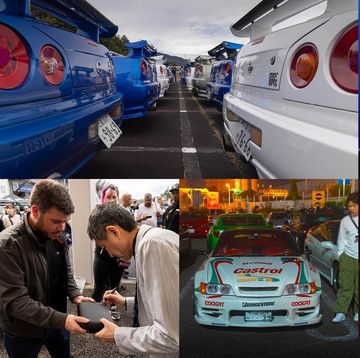
Pilot vs. Passport: Comparing Honda SUVs

The Winningest Cars in 10Best History
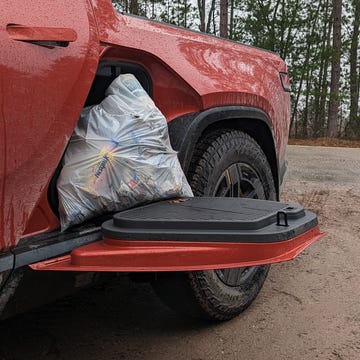
We Fill a Rivian R1T with Garbage for Earth Day

Most Fuel-Efficient Gas Cars (That Aren't Hybrid)
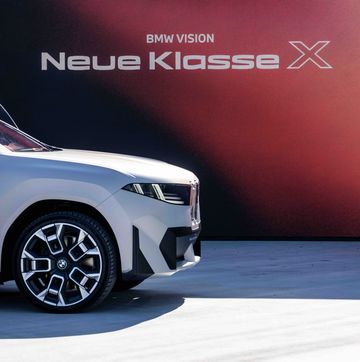
BMW Puts Brains on the Menu with Neue Klasse

The Best Odds: Alfa Romeo Milano

Seeing the Eclipse from the Ford Bronco Off-Roadeo
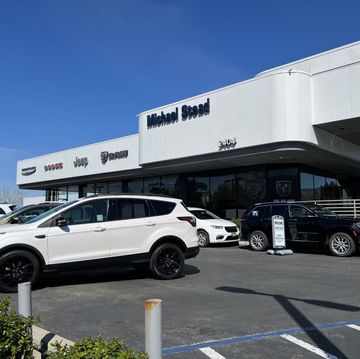
Buying a New Car: What to Know, How to Do It

The 2024 Toyota Tacoma is a Living Legend
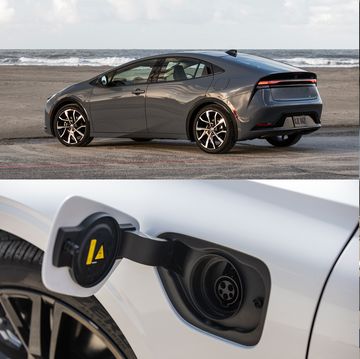
Every Plug-In-Hybrid Vehicle for Sale in the U.S.
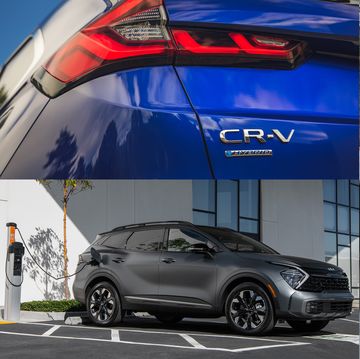
Best Compact Hybrid SUVs of 2024
Cruise Control In Cars Explained (And How To Safely Use It)

Have you ever wished you could set your car's speed and just sit back and relax while driving on a long stretch of highway? If that's the case, then cruise control is just the ticket you've been searching for—and the good news is, it's a standard feature in most cars these days!
Cruise control is a handy feature for drivers that allows you to maintain a constant speed without having to keep your foot on the gas pedal. In this post, we'll explore how cruise control works, its benefits, and how to use it safely to make your driving experience more comfortable.
Understanding Cruise Control
Cruise control, also known as speed control, is an electronic system that allows you to maintain a specific speed without manually controlling the accelerator pedal. The system uses sensors and electronic components to control the throttle and keep your car moving at a desired speed. First introduced in the late 1950s, cruise control has since become a standard feature in most modern vehicles you see on the road today.
How Does It Work?
At its core, cruise control involves a series of sensors that monitor the vehicle's speed and a control unit that regulates the throttle. When the driver sets the cruise control to a specific speed, the system adjusts the throttle to maintain that speed. If the car begins to slow down because of an incline (e.g. going up a hill), the system will open the throttle to accelerate. Conversely, if the car starts to speed up due to a declin (e.g. going downhill), the system will close the throttle to decelerate.
Modern cruise control systems also come with additional features like adaptive cruise control (ACC), which uses radar or cameras to detect vehicles ahead and automatically adjusts the speed to maintain a safe following distance (more on this BELOW).
The History of Cruise Control
The invention of cruise control can be traced back to the late 1940s and early 1950s, when engineer Ralph Teetor developed the first-speed control system. This innovative feature was designed to help drivers maintain a steady speed, reduce fatigue while driving, and improve fuel efficiency. Over the years, cruise control technology has undergone significant advancements, leading to the development of sophisticated systems like adaptive cruise control.
Types of Cruise Control Systems
Today, drivers can choose from a range of cruise control systems, each with its own unique features and functionalities.
Conventional Cruise Control
Conventional cruise control is like your old reliable friend. It's pretty basic and doesn't have any fancy bells and whistles. You just set the speed you want, and it'll keep your car cruising along at that speed, no problem. It's perfect for those long drives on open highways, but it doesn’t automatically react to other cars on the road.
So, if the car in front of you slows down, you'll need to step in and adjust your speed manually. This trusty system comes standard on most cars and is great for saving some fuel on those long road trips .

Adaptive Cruise Control (ACC)
Now, if conventional cruise control is your old reliable friend, then Adaptive Cruise Control (ACC) is like that friend's tech-savvy younger cousin. ACC isn't just maintaining your set speed, it's also keeping an eye on the car in front of you. If that car slows down, ACC slows your car down to keep a safe distance .
It's like having an extra set of eyes on the road, making highway driving a breeze. Plus, some ACC systems can even handle stop-and-go traffic, bringing your car to a full stop and then picking up speed again when traffic gets moving.
Predictive Cruise Control
Predictive Cruise Control is like the fortune teller of cruise control systems. It uses GPS and map data to see into the future and predict what's coming up on the road, like hills or curves, and adjusts your speed accordingly. This means you get a smoother ride and better fuel efficiency, but it all depends on the quality of the GPS and map data. If that's a bit out of date, your fortune-telling cruise control might not be so accurate. It's usually found in more high-end vehicles where top-notch fuel efficiency is a focus for the engineers.
Cooperative Adaptive Cruise Control (CACC)
And then we have Cooperative Adaptive Cruise Control, or CACC. This is like the team player of cruise control systems. It allows cars to talk to each other, coordinating their speeds to maintain a safe distance. It's like having a well-coordinated team of cars all working together to make the traffic flow smoother and reduce congestion. Picture it like a synchronized dance on the highway, where every car knows its place and keeps the right distance. This tech is still pretty new, but it's got a lot of potential. Imagine a future where traffic jams could be a thing of the past.
Remember, these systems are here to make your drive smoother and safer, but they're not a replacement for your attention. No matter how fancy your cruise control is, these systems can be greatly influenced by external conditions like weather and traffic, and they should always be used as aids, not replacements, for attentive driving.
Common Cruise Control Symbols and Indicators
Understanding the various symbols and indicators associated with cruise control is important for safe and effective usage. These symbols typically appear on the dashboard (or on the side of the steering wheel) and may include a speedometer icon, "SET," "RES" (resume), and "CANCEL". Be sure to consult your vehicle's owner's manual for specific details and explanations of these symbols.
Benefits of Using Cruise Control
Cruise control offers several benefits to drivers, especially during long road trips or highway driving.
Fuel Efficiency
One of the main advantages of using cruise control is improved fuel efficiency. By maintaining a constant speed, cruise control helps reduce fuel consumption, leading to better gas mileage. Rapid acceleration and deceleration, on the other hand, can lead to increased fuel consumption.
Comfort and Convenience
Cruise control allows drivers to take their foot off the accelerator pedal, reducing fatigue and improving comfort during long drives. It also helps drivers avoid unintentionally exceeding the speed limit by setting a maximum speed.
When used correctly, cruise control can contribute to safer driving. By maintaining a steady speed, it reduces the likelihood of erratic driving behavior and potential accidents. However, it is important to note that cruise control shouldn't be used in certain conditions, such as heavy traffic or slippery roads .
Troubleshooting Common Cruise Control Issues
Occasionally, you may encounter issues with your cruise control systems. Common problems include cruise control not engaging or disengaging unexpectedly. Possible causes may include a faulty brake light switch, malfunctioning sensors, or issues with the control module. If you experience any problems with your cruise control, it's best to have a qualified technician diagnose and repair the issue for you.
Cruise Control and Road Etiquette
Practicing proper road etiquette while using cruise control is essential for a safe and pleasant driving experience. Here are some tips on how to use cruise control courteously:
- Avoid using cruise control in heavy or congested traffic, as it may hinder your ability to react quickly to changing conditions.
- Be mindful of other drivers when setting your speed. Avoid setting a speed that's significantly slower or faster than the flow of traffic.
- If you are in the passing lane and using cruise control, be sure to adjust your speed or temporarily disengage the system to allow faster-moving vehicles to pass.
- Always signal your intentions, such as lane changes or exiting the highway, even when using cruise control.
The Future of Cruise Control Technology
Cruise control technology plays a vital role in the development of autonomous vehicles, or self-driving cars . In autonomous vehicles, cruise control systems work together with other advanced driver assistance systems (ADAS) to enable the vehicle to operate without direct driver input. These systems include lane-keeping assist, automatic emergency braking, and collision avoidance systems.
As autonomous vehicles become more sophisticated, cruise control technology is evolving to support higher levels of automation. For example, some autonomous vehicles are equipped with advanced cruise control systems that can navigate complex traffic scenarios, merge onto highways, and even change lanes autonomously.
While fully autonomous vehicles are still in the developmental stages, the integration of cruise control technology is a big step toward creating safer and more efficient transportation systems.
As automotive tech continues to advance, cruise control systems are becoming more intelligent and capable. Here are some potential developments we can expect to see in the future of cruise control technology:
- Integration of artificial intelligence (AI) to improve decision-making and responsiveness in adaptive cruise control systems.
- Enhanced connectivity and vehicle-to-vehicle (V2V) communication, enabling cars to share information about traffic conditions and coordinate their speeds for smoother traffic flow.
- Greater customization and personalization options, allowing drivers to set preferences for cruise control behavior, such as following distance and speed adjustments.
Overall, the future of cruise control technology holds promise for creating a more seamless and enjoyable driving experience, with a focus on safety, comfort, and sustainability.
Debunking Myths About Cruise Control
Let's address and debunk some common misconceptions about cruise control:
Myth : Cruise control can be used as a substitute for driver attention.
Fact : Cruise control is a driver assistance feature, not a replacement for attentive driving. Drivers should always remain alert and ready to take control when necessary.
Myth : Cruise control increases the risk of accidents.
Fact : When used appropriately, cruise control can contribute to safer driving by maintaining a steady speed and reducing erratic driving behavior.
Cruise control is a valuable feature that can enhance your driving experience by providing comfort, convenience, and fuel efficiency. Remember to use it safely and appropriately based on driving conditions, and always stay attentive while on the road.
If you found this post informative and want to learn more about car features, driving tips, and automotive technology, be sure to subscribe to our newsletter for regular updates. We're here to help you stay informed and enhance your driving experience.
Frequently Asked Questions About Cruise Control
To further enhance your understanding of cruise control, here are answers to some common questions:
Q : Can cruise control be used in all weather conditions?
A : It isn't advisable to use cruise control in adverse weather conditions, such as heavy rain, snow, or icy roads, as it may reduce your ability to respond quickly to changing road conditions.
Q : Can I use cruise control in urban areas with frequent stop-and-go traffic?
A : Cruise control is best suited for open roads and highways with consistent traffic flow. It isn't recommended for use in urban areas with frequent stops or heavy traffic.
Q : Does cruise control work at any speed?
A : Cruise control typically has a minimum speed threshold, below which it can't be engaged. This threshold varies by vehicle, so check your owner's manual for specific information.
About the Author: This article was crafted by the LOOP Marketing Team. Comprising of seasoned professionals with expertise in the insurance industry, our team is dedicated to providing readers with accurate, up-to-date, and valuable information. At LOOP, we're passionate about helping families navigate the world of car insurance, ensuring they get the best coverage at the most affordable rates. Learn more about our mission and values here.
For more insights on auto insurance and other related topics, visit our blog .
Quick Navigation
Check out how much you could save today.
Browse related articles

Ensuring Safe Long-Distance Driving After Dark

Mastering Parallel Parking: A Step-by-Step Guide

Are Sundays Safe Days To Drive?
Life has many roads. your weekly navigator is just a click away..
A brief history of the cruise control system in your car
&w=256&q=90)
Nowadays, pretty much every car comes with some form of cruise control. Invented in the early 1900s, cruise control became popular on luxury vehicles, but has since become a vital and incredibly useful piece of automotive tech. But what is it exactly? And how can it help you drive more safely?
Cruise control is a nifty setting that allows you, the driver, to set your vehicle to maintain a fixed speed. Unless you touch the accelerator or brake pedal, your car will keep on moving onward, at the exact speed you’ve chosen. Pretty handy, especially when you think about those long highway journeys that seemed fun when you planned them but are a lot less so after five hours of driving. In addition to saving your leg from horrendous cramping, it reduces cognitive fatigue and increases fuel efficiency.
The first version of cruise control appeared in the early 1900s, in a Wilson-Pilcher car. The driver was able to set the chosen speed using a lever on the steering column. What we’d consider modern cruise control came about in the late 1940s, invented by a man named Ralph Teetor . Teetor, who was completely blind, was one of the foremost automotive engineers of his generation. His invention, first called ‘Speedostat’, was introduced in a Chrysler car as a luxury option. Its surge in popularity led the brand to install a ‘Speedostat’ it in all its vehicles. It was officially christened ‘cruise control’ by General Motors when it began using it in its Cadillac vehicles.
Modern cruise control systems began to emerge in the 1990s, with manufacturers incorporating more advanced digital technology into the design. Other systems such as LiDAR, radar, sonar and camera-based solutions were soon added, increasing the car’s ability to sense oncoming traffic, which in turn helped the vehicle to determine speed and avoid potential accidents.
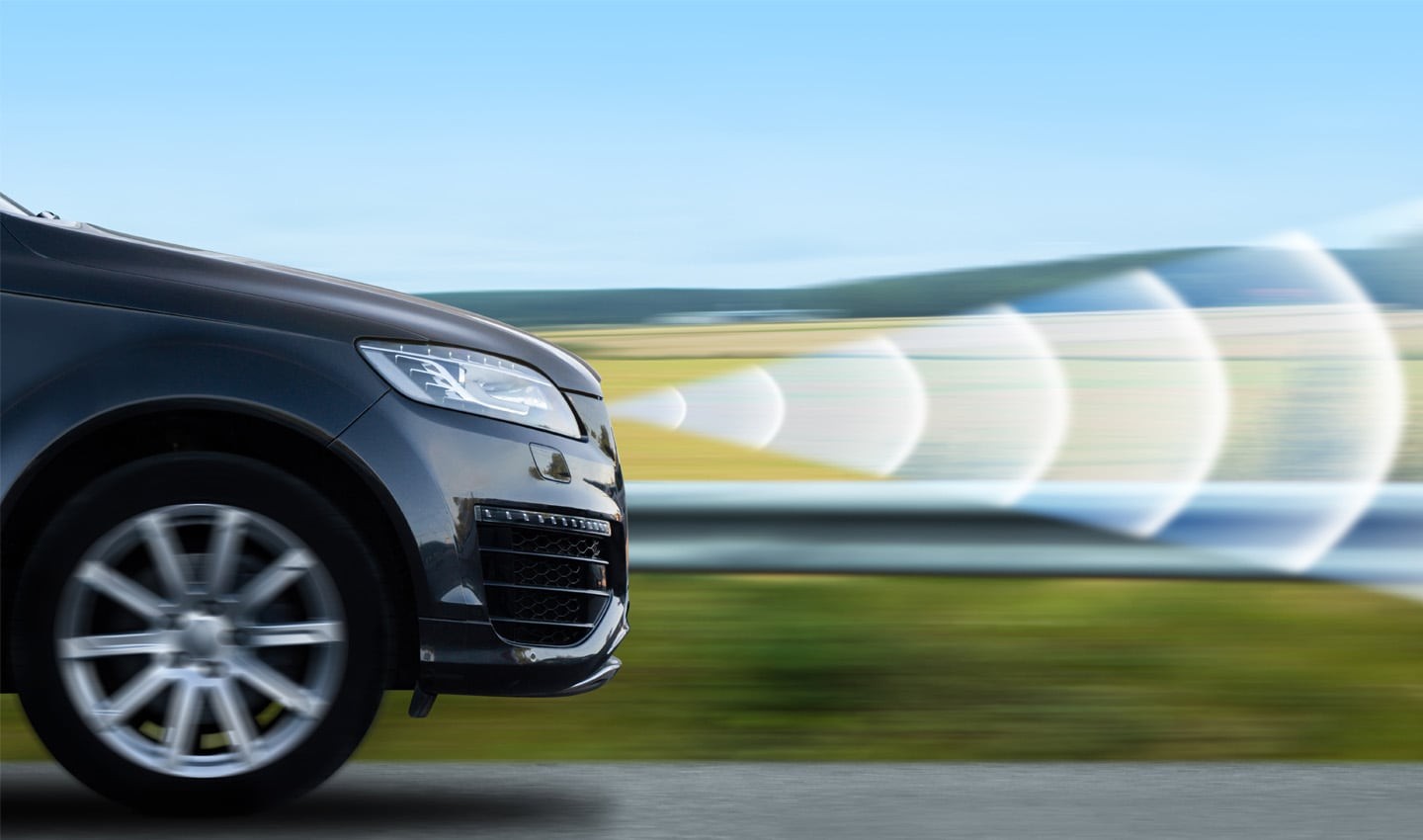
Modern cruise control began to emerge in the 1990s, with advanced digital technology incorporated into the design.
How does it work?
By actively adjusting the car’s throttle , cruise control works to maintain the speed of the car without needing the driver to do anything. In mechanical setups, the system activates the throttle valve with a cable connected to an actuator, which ensures the engine generates enough power to maintain its current speed. However, in newer cars , that use a drive-by-wire throttle body, cruise control is completely electronic. This results in a more predicative system, whereby it can slow down or speed up depending on what the target speed is. It also allows the driver to increase or decrease their speed, usually using buttons on the steering wheel.
The driver, of course, can decide when to use cruise control. They are also in charge of what speed the car will cruise at. After turning the system on, the driver then must set the speed. In some cars, the system will cruise at the current speed, in others it might need to be set. To deactivate the system, the driver must simply press the brake or clutch pedal or cancel it using a button that usually found on the steering wheel.
Different types of cruise control
The examples above are the most simple applications of cruise control, more advanced types of cruise control do exist, though — one of which is most commonly called adaptive cruise control . Cars fitted with an adaptive cruise control system use a forward-looking radar sensor to detect the speed and proximity of the car ahead. It then uses that information to adjust its own speed and keep it at a safe distance.
When the car ahead slows down, so will the car fitted with adaptive cruise control. When the car ahead speeds up, the cruise control will increase the vehicle's speed until it hits its set limit. If you want to dive even deeper into this topic, we’ve written about it before — click here for that article .
There are a many different types of adaptive cruise control – radar-based systems, laser-based systems, binocular computer vision systems, assisting systems, multi-sensor systems and predictive systems. The first two are self-explanatory – using radar and laser systems to detect the vehicles surroundings, as opposed to binocular computer vision which uses cameras in the vehicle’s rearview mirror. Other versions, such as assisting systems , can be bought separately to enhance the safety features that the car already has. Predictive systems use data in order to predict the movement of other vehicles.
The type of cruise control fitted varies from vehicle to vehicle, so it pays to know what type of system your car has so you can understand its capabilities. There are limitations , both with adaptive cruise control and conventional cruise control. The driver must still pay attention at all times and not let their awareness drift. Weather conditions such as snow, rain or fog could also confuse the sensors and adversely affect the adaptive cruise control system.
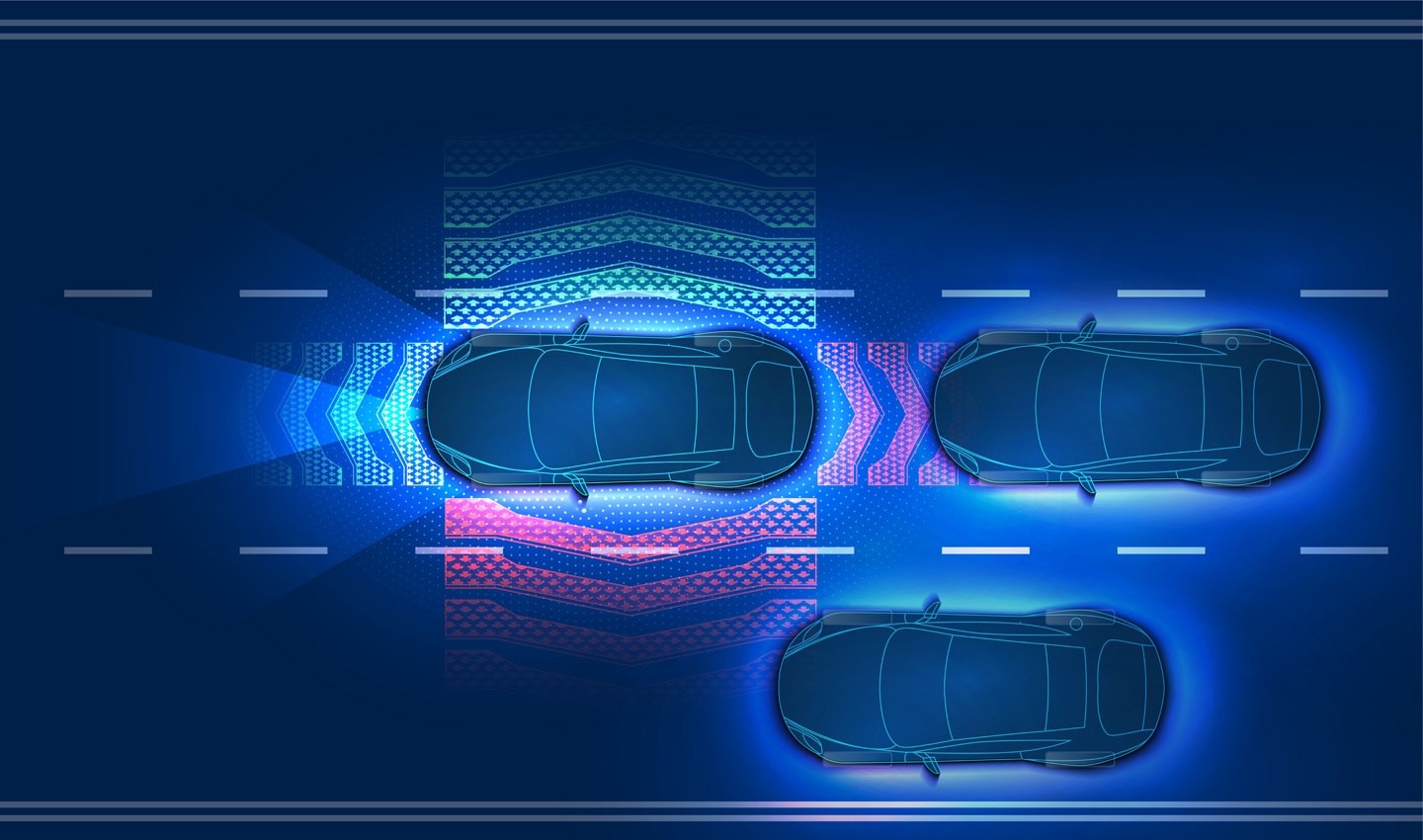
Weather conditions such as snow, rain or fog could confuse the sensors and affect the adaptive cruise control system.
So, what’s next?
Cruise controls is usually packaged as part of the vehicle’s advanced driver-assistance system (ADAS). ADAS, while not autonomous, is constantly evolving to bring drivers new and more powerful safety features. However, Level 2 ADAS systems are viewed by some as the next step towards autonomous vehicles, with technology such as adaptive cruise control playing a core role in their argument. The problem with this though, is that partial automation (AKA cruise control) in cars has led some drivers to grow confused as to how far their vehicle’s autonomy extends, which is a dangerous combination. Recently, Tesla ran into trouble with its customers regarding complaints over cruise control deteriorating over time. The ‘phantom-breaking’ drivers experienced, where the EV would break suddenly and without warning, would almost cause the cars to be rear-ended. Adaptive cruise control, while having evolved exponentially and providing a service that benefits safety on the road, is still not a failsafe for a fully attentive driver and it certainly has a long way to go before becoming fully autonomous.
It also begs the question whether cruise control can be seen as potentially misleading. The false sense of security that drivers experience, thinking that their car is keeping their speed under control or – as with Tesla drivers – is completely autonomous, can lead to distracted driving. Cars do have systems in place to prevent distractions like drowsiness , but lack of attention due to a misguided belief that the vehicle will prevent any potential accidents is not one of them.
When used correctly, though, cruise control can help make driving safer and less fatiguing. But it still begs the question, is it only a matter of time before cruise control systems will be completely autonomous? That remains to be seen. But for now, take comfort in the fact that your car has an extra eye on the road, accompanying you on those tiresome and long drives.
People also read
)
What are driver drowsiness detection systems and how do they work?
)
Intelligent speed assistance systems are coming, next we need drivers to use them
)
What is adaptive cruise control and how does it work?
* Required field. By submitting your contact details to TomTom, you agree that we can contact you about marketing offers, newsletters, or to invite you to webinars and events. We could further personalize the content that you receive via cookies. You can unsubscribe at any time by the link included in our emails. Review our privacy policy .
- / TomTomOfficial
- / tomtomglobal
- Navigation apps
- Personal and professional sat navs
- In-dash navigation
- Accessories
- Maps and service updates
- TomTom Orbis Maps
- Navigation Map
- TomTom Satellite Imagery
- Traffic APIs
- Routing APIs
- Map Display API
- Places APIs
- Tracking & Logistics APIs
- Automotive APIs
- TomTom Digital Cockpit
- Navigation Engine
- Navigation User Interface
- Virtual Horizon
- Navigation SDK for Mobile
- How we hire
- Diversity and inclusion
- Press releases
- TomTom Traffic Index
- TomTom Customer Portal
- TomTom MOVE
- TomTom Suppliers
- Privacy policy
- Legal information
- Terms of use
- Report vulnerabilities
- Report a map change
What Is Adaptive Cruise Control?

NatalyaBurova | Getty Images
Advanced Driver-Assist Systems Make Our Lives Easier (and Safer)
Sadly, millions of people are involved in car crashes every year. According to the CDC, about 90 people die each day in the U.S. as a result of a car crash. However, crash fatalities are decreasing almost every year, even though there are more cars on the road. While the reasons for the decline aren’t clear-cut, advances in overall vehicle safety and advanced driver-assist systems seem to be contributing to the decline.
Advertisement
While most of today’s cars offer multiple driver-assist features, cruise control is still arguably one of the greatest advancements in the history of car technology. Interestingly, the feature was first invented over 60 years ago. Since then, there have been notable improvements that make the latest versions of cruise control safer and much more useful.
The invention of cruise control, along with its evolution to adaptive cruise control, marked the beginning of what may eventually lead to self-driving cars. Continue reading to learn all about adaptive cruise control.

Sara Dalsecco | EyeEm
The History of Cruise Control
Various forms of cruise control were used in cars dating all the way back to the beginning of the twentieth century. However, modern cruise control was invented by American engineer Ralph Teetor in 1948. He secured a patent for the technology in 1950, and it made its way into passenger cars by the 1960s.
Teeter came up with the idea while riding along in a car with his lawyer. As a passenger in the car, he noticed that every time his lawyer talked, the car changed speeds.
Adaptive cruise control’s roots date back to 1992 when Mitsubishi launched a Lidar-based distance-detection system in Japan. However, the technology didn’t adjust the car’s speed on its own, but rather alerted the driver to take action.
By 1995, Mitsubishi improved the system to adjust the car’s speed on its own via transmission and throttle management, though actual braking was still controlled by the driver. In the early 2000s, many automakers started offering their own, more advanced versions of adaptive cruise control.

LeshkaSmok | Getty Images
What Is Cruise Control?
To most people, this may seem like a silly question. However, to better understand the evolution of cruise control, it’s important to take a look at its basic functionality.
Cruise control is a system designed to automatically control a vehicle’s speed, which the driver must pre-set after activating. It’s most useful for long highway or freeway drives, and/or in areas where there’s not much traffic, or a need to stop often. Cruise control isn’t very useful at low speeds, or in areas where there are many stop signs or traffic lights.
With cruise control engaged, you don’t have to keep your foot on the accelerator pedal or work to maintain a consistent speed. This means you can more easily adjust your seating position, rest your legs and feet, and focus on other aspects of driving. As an aside, keeping a car at a consistent speed typically leads to better fuel economy.
The controls and buttons for cruise control vary among vehicles. Typically, they’re found on either the steering wheel or a stalk on the steering column. The driver holds a steady speed using the accelerator pedal and then “sets” the speed before taking their foot off the pedal. There are also “+” and “-” buttons to change speed incrementally, as well as a button to disengage the feature and/or resume the pre-set speed. Touching the brake pedal immediately turns off cruise control.

Volvo Cars of North America |
Adaptive cruise control (ACC) is a system that helps cars stay within the speed limit or the pre-set speed while maintaining a safe, predetermined distance behind a “leading” car. When the vehicle in front of you speeds up or slows down, the system adjusts the car’s speed as necessary.
Some advanced adaptive cruise control systems have “stop-and-go” technology – sometimes called traffic jam assist. This means the system will, when necessary, bring the car to a complete stop, wait for traffic to clear or for the leading car to begin moving, and then accelerate again to the speed limit or pre-set speed. The system continues to maintain a safe distance throughout these maneuvers.
While adaptive cruise control is the most commonly used term for this technology, different automakers have different names for it. If you read that a car offers smart cruise control, active cruise control, automatic cruise control, dynamic cruise control, radar cruise control, or intelligent cruise control, be sure to find out exactly what the feature’s capabilities are.
Most importantly, find out if the feature adjusts the car’s speed on its own, and if it has stop-and-go capability. Be sure to test-drive any vehicle before buying or leasing it. Get acquainted with the adaptive cruise control feature during your test drive. Make sure you understand exactly how it works and what it’s capable of before moving forward with the transaction.

How Does Adaptive Cruise Control Work?
Various car manufacturers have different technologies for adaptive cruise control. However, the basic idea is the same. The car uses either a laser or radar to measure the distance to the leading vehicle. These are essentially the same lasers and radars used for features like forward collision warning and automatic emergency braking. They’re also used in vehicles with semi-autonomous technology. For this reason, it’s fair to say that cruise control was the first step toward what may eventually evolve into self-driving vehicle technology.
It’s important to note that some laser-based adaptive cruise control systems won’t function properly in inclement weather and/or if the sensors are wet or dirty. Radar-based systems are largely unaffected by weather or debris. While more systems employ radar than lasers, be sure to find out which technology your car – or the car you’re planning on buying – uses.
Adaptive cruise control isn’t often a standalone technology. Instead, it’s usually part of a suite of safety systems that work together. If a car has adaptive cruise control, it likely also has forward collision warning and automatic emergency braking. Some more advanced vehicles also have pedestrian detection, as well as systems that help keep your car in its lane, or even help steer the car on the highway when adaptive cruise control is engaged.

dimarik | Getty Images
What Are the Limitations of Adaptive Cruise Control?
Like almost all vehicle safety technologies, adaptive cruise control is constantly improving. However, it’s still not a substitute for a human driver. While adaptive cruise control is meant to reduce stress and make driving easier, you still need to remain aware, engaged, and ready to take over the accelerator and brake pedal at a moment’s notice.
Adaptive cruise control isn’t meant to steer the car, though other complementary safety systems may help with steering as well. Adaptive cruise control systems with stop-and-go technology will monitor the car in front of you and adjust the speed accordingly. Some systems even observe speed limit signs and slow down around tight curves. With that said, if another driver slams on the brakes in front of you, cuts you off, or makes a sudden maneuver, you should immediately take over. Remember, some cruise control systems either won’t operate or shouldn’t be used in inclement weather.
While your car may also have features like automatic emergency braking, you can’t count on those features to do the job for you. Instead, the features are there just in case you don’t react quickly enough.

Mercedes-Benz USA |
Should You Avoid Cars That Don’t Have Adaptive Cruise Control?
When searching for a new or used car, you should try to prioritize finding a vehicle with as many of the latest advanced driver-assist systems as possible. This is especially true if you plan to keep the car for many years.
Safety is of the utmost importance when shopping for a car. As vehicle safety systems are improving rapidly, it doesn’t take long for a car’s safety systems to become dated or even considered obsolete. For this reason, making sure you have the latest advanced driver-assist systems means you’ll be able to keep your car for a longer period of time before its features are no longer consistent with the most up-to-date technologies.

Chesky_W | Getty Images
Is Adaptive Cruise Control Worth it?
It depends. While any technology that will make your life easier and safer is arguably worth it, adaptive cruise control can be a pricey option in some cars. You may have to buy a trim above the base and/or add a package. However, in many cars, adaptive cruise control comes standard, usually as part of a full suite of active safety technologies.
When you’re shopping for a car, make sure it comes equipped with as many safety systems as possible. If you have your eyes on a vehicle, and you learn that it doesn’t include a suite of safety systems, find out how much it costs to add them. If it exceeds your budget, you may want to consider a competing model that includes adaptive cruise control and other safety systems as standard.

American Honda Motor Co., Inc. |
Which Cars Have Adaptive Cruise Control?
Nearly every automaker offers adaptive cruise control. However, some systems are more advanced than others. Automakers such as Audi, BMW, Ford, Honda, Hyundai, Kia, Nissan, and Toyota are generally known for having some of the best advanced driver-assist systems, though many other brands offer adaptive cruise control technology that works well.
While advanced driver-assist systems like adaptive cruise control were once reserved for luxury cars or top-level trims on larger cars and SUVs, that’s not the case today. In fact, well-priced small cars like the Honda Civic , Mazda3 , Subaru Legacy , and Toyota Corolla come standard with adaptive cruise control. Even budget-mobiles, such as the Honda Fit and Nissan Versa offer the feature.
Many of today’s SUVs come standard with adaptive cruise control as well, and those that don’t have it on the base model still offer it as an upgrade. The feature even comes standard on some small, relatively inexpensive SUVs, including the Honda CR-V , Mazda CX-3 and CX-30 , Subaru Forester , and Toyota C-HR . To see a list of the cheapest cars and SUVs with adaptive cruise control, click here .
More on the 2021 Honda Civic
- See 2021 Honda Civic Photos »
- Find 2021 Honda Civic For Sale »
- Read the 2021 Honda Civic Full Review »
- See 2021 Compact Car Rankings »

U.S. News & World Report |
More Shopping Tools From U.S. News & World Report
If you’re in the market for a new car, check out our new car rankings to compare different models and see which vehicles offer adaptive cruise control. Also, be sure to visit our new car financing deals and lease deals pages to learn about the best current manufacturer-sponsored incentives on new cars, trucks, and SUVs.
When it comes time to move forward, use our U.S. News Best Price Program to find the dealer near you with the best pre-negotiated pricing. Shoppers who use the program to buy or lease a new car save an average of more than $3,200 off MSRP.
Browse Cars

Recommended Articles

The Safest SUVs
Cherise Threewitt Dec. 19, 2023

Safest Small Cars
Caroline Anschutz Oct. 4, 2023

Safest Luxury Midsize SUVs
Victoria Scott July 24, 2023

23 Cheapest Cars With Adaptive Cruise Control
Kevin Linder July 2, 2020

Best Luxury Cars Under $50k
Cherise Threewitt April 29, 2024

Toyota Highlander vs. Chevrolet Traverse
Warren Clarke April 29, 2024
- Cambridge Dictionary +Plus
Meaning of cruise control in English
Your browser doesn't support HTML5 audio
- Having just done the trip in my new car with cruise control , I have to say that it was much less tiring .
- Cruise controls have a switch to toggle them off when you touch the brake pedal .
- A four-wheel drive vehicle that was stuck in cruise control at 80 mph took its driver on a terrifying drive for more than 50 miles .
- I don't even notice I'm running ; it's like being in cruise control .
- On the new album , their second full-length collaboration , the two are once again on cruise control .
- biting point
- carburetion
- combustion chamber
- distributor
- drive shaft
- internal combustion engine
You can also find related words, phrases, and synonyms in the topics:
Examples of cruise control
Translations of cruise control.
Get a quick, free translation!

Word of the Day
anonymously
without the name of someone who has done a particular thing being known or made public

Dead ringers and peas in pods (Talking about similarities, Part 2)

Learn more with +Plus
- Recent and Recommended {{#preferredDictionaries}} {{name}} {{/preferredDictionaries}}
- Definitions Clear explanations of natural written and spoken English English Learner’s Dictionary Essential British English Essential American English
- Grammar and thesaurus Usage explanations of natural written and spoken English Grammar Thesaurus
- Pronunciation British and American pronunciations with audio English Pronunciation
- English–Chinese (Simplified) Chinese (Simplified)–English
- English–Chinese (Traditional) Chinese (Traditional)–English
- English–Dutch Dutch–English
- English–French French–English
- English–German German–English
- English–Indonesian Indonesian–English
- English–Italian Italian–English
- English–Japanese Japanese–English
- English–Norwegian Norwegian–English
- English–Polish Polish–English
- English–Portuguese Portuguese–English
- English–Spanish Spanish–English
- English–Swedish Swedish–English
- Dictionary +Plus Word Lists
- English Noun
- Translations
- All translations
To add cruise control to a word list please sign up or log in.
Add cruise control to one of your lists below, or create a new one.
{{message}}
Something went wrong.
There was a problem sending your report.
- Daily Crossword
- Word Puzzle
- Word Finder
- Word of the Day
- Synonym of the Day
- Word of the Year
- Language stories
- All featured
- Gender and sexuality
- All pop culture
- Grammar Coach ™
- Writing hub
- Grammar essentials
- Commonly confused
- All writing tips
- Pop culture
- Writing tips
Advertisement
cruise control
- a system, available for some automobiles, motorcycles, etc., that automatically maintains a vehicle's speed by taking control of the accelerator.
- a system in a road vehicle that automatically maintains a selected speed until cancelled
Discover More
Example sentences.
Top safety scores are a plus, as is the adaptive cruise control, semiautonomous parking and 180-degree front-end camera.
Unlike the NSX, the Venza had very comfortable seats and adaptive cruise control.
Multistrada V4 by DucatiFinally, real cruise control on a motorcycleMotorcycles have had the smarts to help riders avoid looming collisions for a few years now, but that intelligence has had its limits.
The molded grip includes a variable-speed trigger and cruise control, and the unit starts using push-button technology—so there’s no cord to pull.
The Easy Start technology makes for simpler pull-starts, and once working, you can coast using the cruise control.
Xabi Alonso scored from the spot, and one sensed that the Iberians, now in cruise-control, would win the game nonchalantly.
Finally, on February 1, adjust your strategy as needed and put it on cruise control.
Congress, she averred, should put itself on “cruise control—Ted Cruz control—just for a week.”
- To save this word, you'll need to log in. Log In
adaptive cruise control
Definition of adaptive cruise control
Examples of adaptive cruise control in a sentence.
These examples are programmatically compiled from various online sources to illustrate current usage of the word 'adaptive cruise control.' Any opinions expressed in the examples do not represent those of Merriam-Webster or its editors. Send us feedback about these examples.
Word History
1988, in the meaning defined above
Dictionary Entries Near adaptive cruise control
adaptive optics
Cite this Entry
“Adaptive cruise control.” Merriam-Webster.com Dictionary , Merriam-Webster, https://www.merriam-webster.com/dictionary/adaptive%20cruise%20control. Accessed 30 Apr. 2024.
Subscribe to America's largest dictionary and get thousands more definitions and advanced search—ad free!

Can you solve 4 words at once?
Word of the day.
See Definitions and Examples »
Get Word of the Day daily email!
Popular in Grammar & Usage
More commonly misspelled words, commonly misspelled words, how to use em dashes (—), en dashes (–) , and hyphens (-), absent letters that are heard anyway, how to use accents and diacritical marks, popular in wordplay, the words of the week - apr. 26, 9 superb owl words, 'gaslighting,' 'woke,' 'democracy,' and other top lookups, 10 words for lesser-known games and sports, your favorite band is in the dictionary, games & quizzes.


IMAGES
VIDEO
COMMENTS
Cruise control (also known as speed control, cruise command, autocruise, or tempomat) is a system that automatically controls the speed of an automobile. The system is a servomechanism that takes over the car's throttle to maintain a steady speed set by the driver.
The cruise control system controls the speed of your car the same way you do -- by adjusting the throttle position.But cruise control actuates the throttle valve by a cable connected to an actuator, instead of by pressing a pedal.The throttle valve controls the power and speed of the engine by limiting how much air the engine takes in (see How Fuel Injection Systems Work for more details).
Cruise control is a feature allowing the driver to set a predetermined speed, which the system's computer maintains until the driver adjusts the speed, taps the brake, or disengages the system ...
1. Definition. Cruise control is an electronic system that allows a vehicle to maintain a consistent speed, without the need for continuous driver input on the accelerator pedal. 2. Activation. Cruise control systems are typically activated by pressing a button or switch located on the steering wheel or dashboard. 3. Function.
Cruise-control is a feature found in some vehicles that allows the driver to maintain a constant speed without needing to keep their foot on the accelerator. The onboard computer controls the vehicle's speed. Additionally, most cruise control systems allow you to adjust your speed using buttons.
Adaptive cruise control (ACC) is an intelligent form of cruise control that slows down and speeds up automatically to keep pace with the car in front of you. The driver sets the maximum speed ...
5 - Watch the road and steer. Watching the road is essential when cruise control is engaged. Cruise control is not a substitute for a human driver and will require supervision at every step. If you are using a semi-autonomous system, you will not need to steer but will need to keep at least one hand on the wheel for safety measures.
Adaptive cruise control (ACC) is a system designed to help road vehicles maintain a safe following distance and stay within the speed limit. This system adjusts a car's speed automatically so ...
Basically, a cruise control system works by the system taking a speed signal from a drive mechanism, be it a wheel speed sensor from the engine's revs, speedometer cable or even a rotating driveshaft. Some speed signals can even be obtained from internal electronic speed pulses. Once the signal is obtained, you can set a steady speed.
Cruise control begins with a set of buttons on the steering wheel that allows the driver to turn the system on and off, set the desired speed, and either increase or reduce speed. The driver sets the speed by pushing the accelerator pedal until the desired speed is reached and hits the 'Set' button. Depending on the age of the vehicle ...
You operate cruise control by either a stalk on the steering column or several buttons on the steering wheel. These include an on-off switch; a "set" button to select the speed you want the car to ...
Simple to use, all you need to do is turn on the system in your vehicle, reach your desired cruising speed, and set it. The system then assumes control of the accelerator, maintaining the set ...
Cruise control, also known as speed control, is an electronic system that allows you to maintain a specific speed without manually controlling the accelerator pedal. The system uses sensors and electronic components to control the throttle and keep your car moving at a desired speed.
The cruise control system controls the speed of your car the same way you do - by adjusting the throttle (accelerator) position. However, cruise control engages the throttle valve by a cable connected to an actuator, rather than by pressing a pedal. The throttle valve controls the power and speed of the engine by limiting how much air it ...
Modern cruise control systems began to emerge in the 1990s, with manufacturers incorporating more advanced digital technology into the design. Other systems such as LiDAR, radar, sonar and camera-based solutions were soon added, increasing the car's ability to sense oncoming traffic, which in turn helped the vehicle to determine speed and ...
cruise control: [noun] an electronic device in a vehicle that controls the throttle so as to maintain a constant speed.
Adaptive cruise control by the Insurance Institute for Highway Safety (example video) Adaptive cruise control ( ACC) is a type of advanced driver-assistance system for road vehicles that automatically adjusts the vehicle speed to maintain a safe distance from vehicles ahead. As of 2019, it is also called by 20 unique names that describe that ...
Adaptive cruise control (ACC) is a system that helps cars stay within the speed limit or the pre-set speed while maintaining a safe, predetermined distance behind a "leading" car. When the vehicle in front of you speeds up or slows down, the system adjusts the car's speed as necessary.
The most basic adaptive cruise control systems relieve the stress of operating the accelerator pedal in many cruising conditions. Newer, better systems offer stop-and-go functionality, sometimes ...
CRUISE CONTROL meaning: 1. a system in a vehicle that allows the driver to set a speed at which the vehicle will continue…. Learn more.
How to use cruise control. To use cruise control, you can typically press buttons on your steering wheel to activate the system, set your speed, adjust your speed up or down within the system, and deactivate the system. Using cruise control lets you set a speed for your car to maintain even if you take your foot off the gas.
Cruise control definition: a system, available for some automobiles, motorcycles, etc., that automatically maintains a vehicle's speed by taking control of the accelerator.. See examples of CRUISE CONTROL used in a sentence.
a system in an automobile that can automatically adjust the settings of the cruise control in response to external driving conditions… See the full definition Menu Toggle
control system: A control system is a set of mechanical or electronic devices that regulates other devices or systems by way of control loops . Typically, control systems are computerized.